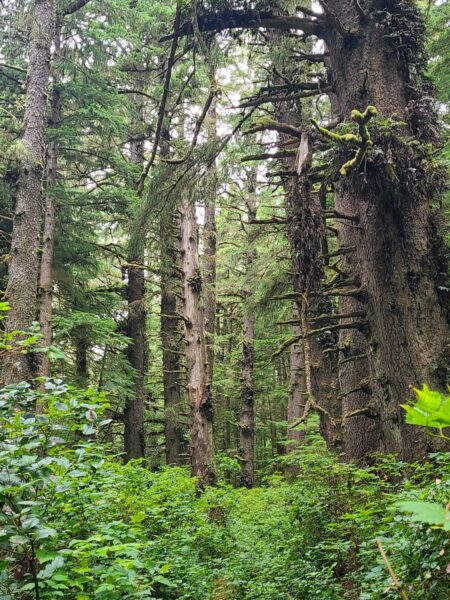A Wild Experience - Hiking the Hesquiat Peninsula
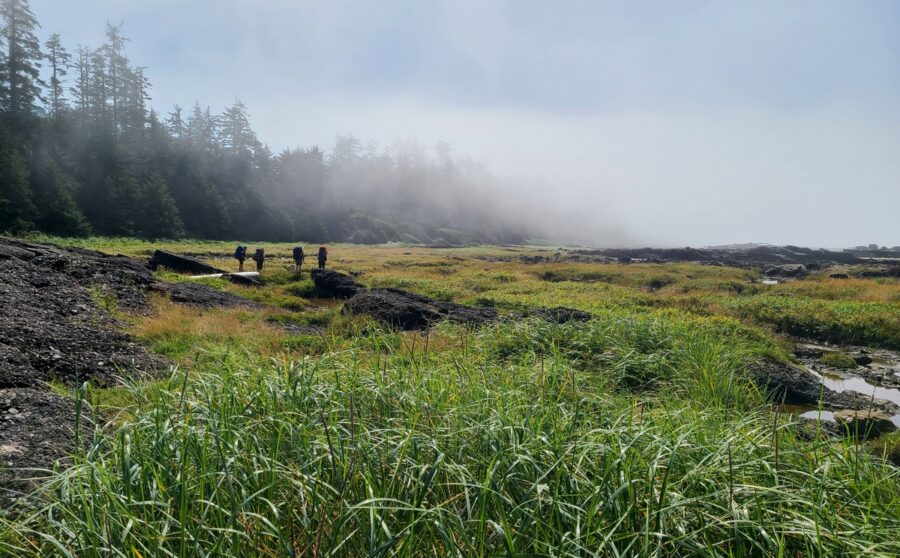
At the end of August I hiked the Hesquiat trail with my husband and four other friends. The trail follows the coast of the Hesquiat Peninsula, a large promontory just south of Nootka Island, which divides Nootka and Clayquot Sounds. This was one of the more remote and wild places I have ever been to. We were the only hikers we saw on the entire six day trip. It felt like it was just us and the wilderness.
The float plane from the Gold River dock took about twenty minutes, flying over Nootka Sound, past fish farms, fish boats and clearcuts and dropping us off at Escalante Point. We were thankful it was a calm, warm morning, as there is no dock there – you are dropped off in the water and must wade through the ocean with your packs. We had heard this can be a bit challenging when there’s wind and waves.
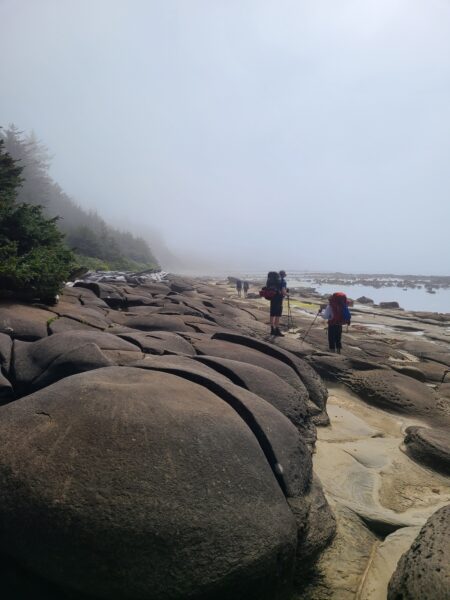
The 50km hike is mostly along the beach, which was very diverse. We navigated pristine sandy beaches, grassy salt marshes, weathered sandstone and rock shelves that were sometimes layered at angles, looking like a dragon’s back. We sunk into pebbles, balanced on rocks and teetered on logs and boulders. You had to keep your head down and look where you were going so you didn’t slip, trip or step in a hole.
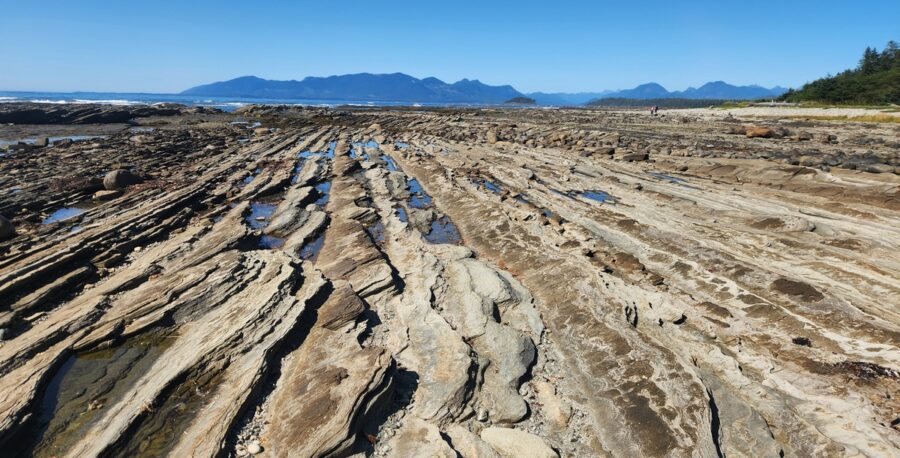
We pitched our tents at a unique camp every night, usually near a fresh water source and in the evening especially, we saw wildlife. At our first camp, Barchester Bay, which is a big sandy beach, a couple of wolves were wanting to pass by. The beach is their highway. Banging pots and pans, we discouraged them from going right through our camp, so they snuck through the forest behind. At Homais Cove you could hear the humorous bellow of sea lions through the dim fog that had settled there. This was a particularly good wildlife viewing area, as a large creek emptied into a small protected cove. A lone wolf walked in front of our camp, but from a wide distance; never looking our way. It didn’t need a pack, a tent or quick dry clothing – in its beautiful fur coat we watched it seemingly glide over the rocks. We also viewed a bear in the evening come out to turn over rocks looking for crabs. Our next campsite, Antoine Point was wide open with a silky soft sandy beach and a rocky spit full of gulls in front. Our second last night was at La Claire Point where a bubbling creek ran parallel to the shore. It was very hot out, and feeling a little grimy by this point, we swam in the ocean and then rinsed off in the creek. Thankfully the provincial fire ban was lifted right before our trip, so we enjoyed a fire at night under stars (and satellites) which were so bright during the new moon that I saw a planet’s light reflected in the ocean.
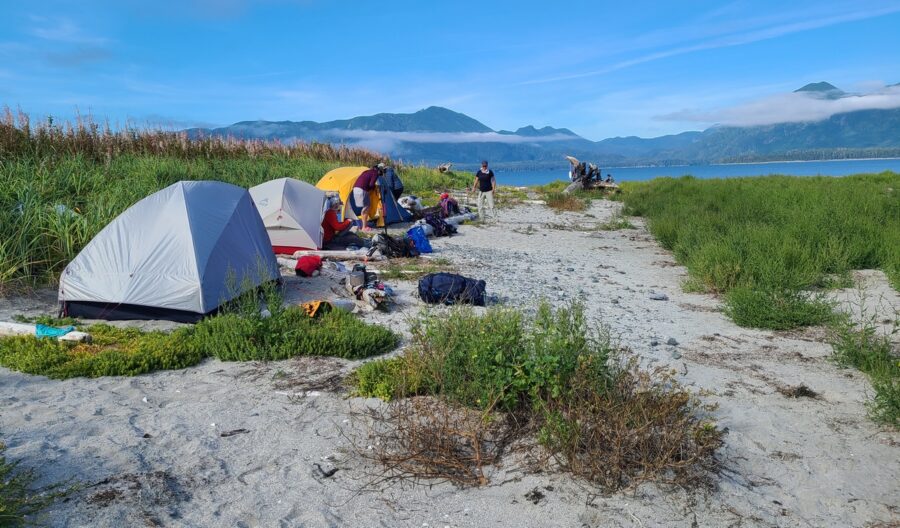
We mostly walked on the beach the entire trip, but did pass through a few forested sections which were all spruce and cedar – a few old growth. Much of the peninsula (which is the ancestral lands of the Hesquiaht Nation) is now Provincial Park, but logging was and is still very prevalent all around the area. One gnarly forest of spruce had gardens of salal growing on their branches almost as high up as we could see. At our destination, Boat Basin, we walked on a path through a small grove of ancient cedar, where I saw maybe the most perfect and fully realized cedar tree I have ever seen. It looked like it had not experienced any lightning strikes or any other significant damage for hundreds of years. I thought that at one time there were probably thousands of trees like it, but now it seems like a rarity. Visiting these very massive trees felt like being at the centre and still beating heart of the area.
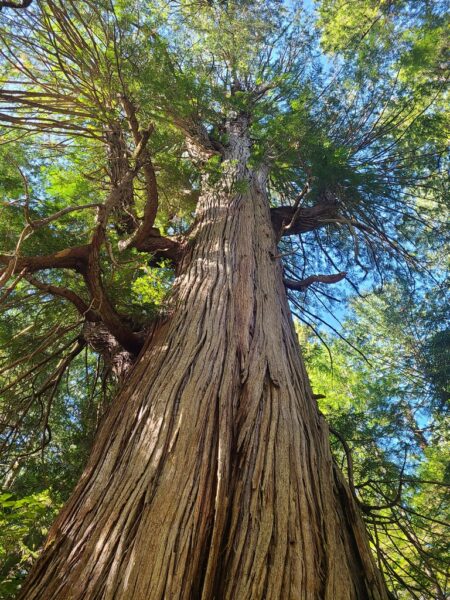
The Hesquiat Peninsula is a place that exists on the margins of time, where ghosts of a distant past drift nearby. There are about five permanent residents; the two lighthouse keepers at Estevan Point, Diane and a couple of her grown children (who told us a few stories and sold us tequila fudge) at Hesquiaht village and Peter, a builder and geologist, who is also the caretaker at the legendary Cougar Annie’s garden, of which he gave us a tour. There are also the pilots, boat operators and loggers that come and go. Without many people around anymore, the main events seem to be the weather, tides, cycles of the moon, activities of animals and yearly growth of the bush that must be fought back with beefy mowers and chainsaws if you want to keep your space. With it’s unique geography and swampy forest, the peninsula is abundant in opportunities to explore and marvel in nature. It gave us a chance to witness what happens when humans are a side note and not the main attraction.
